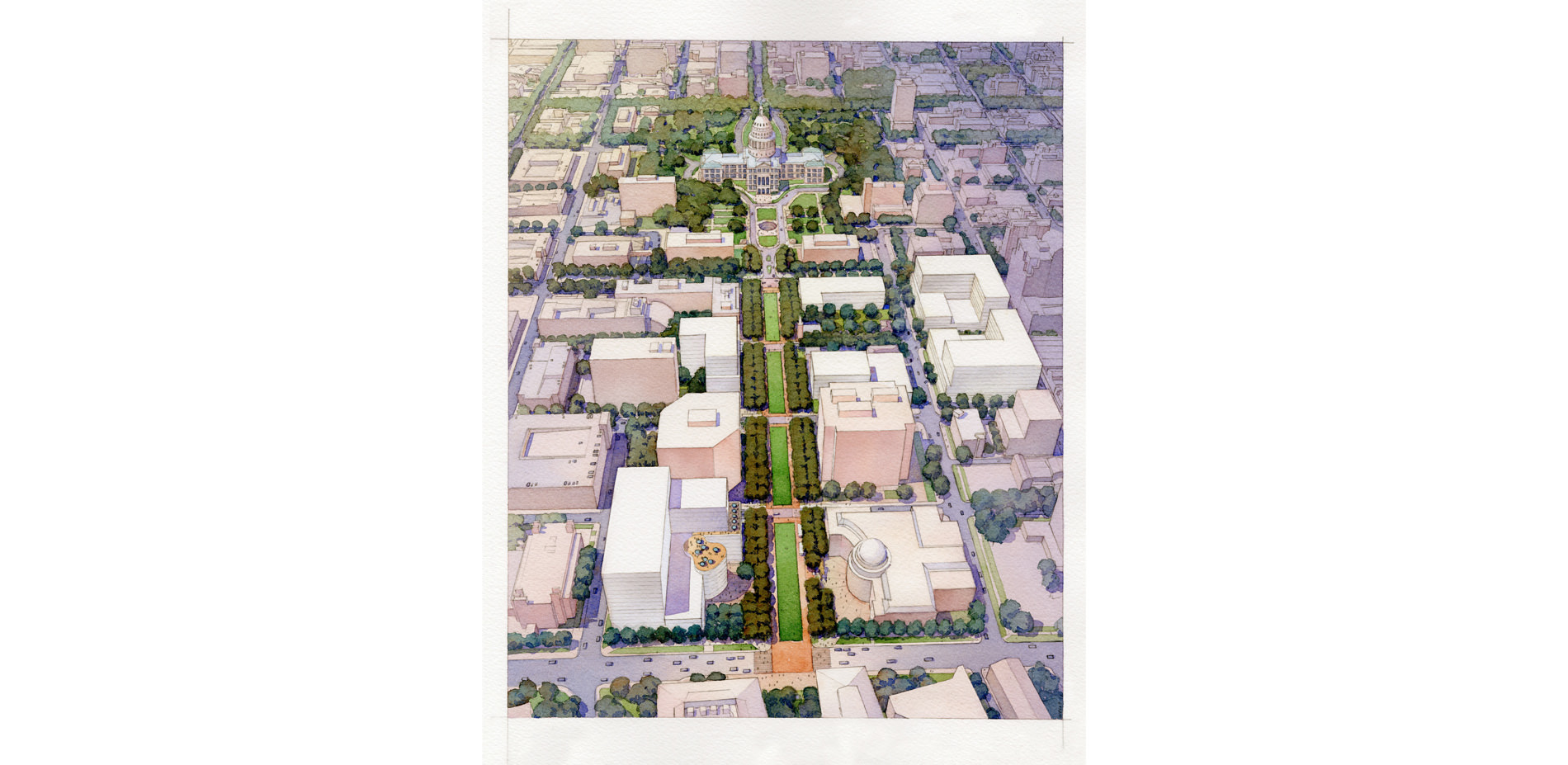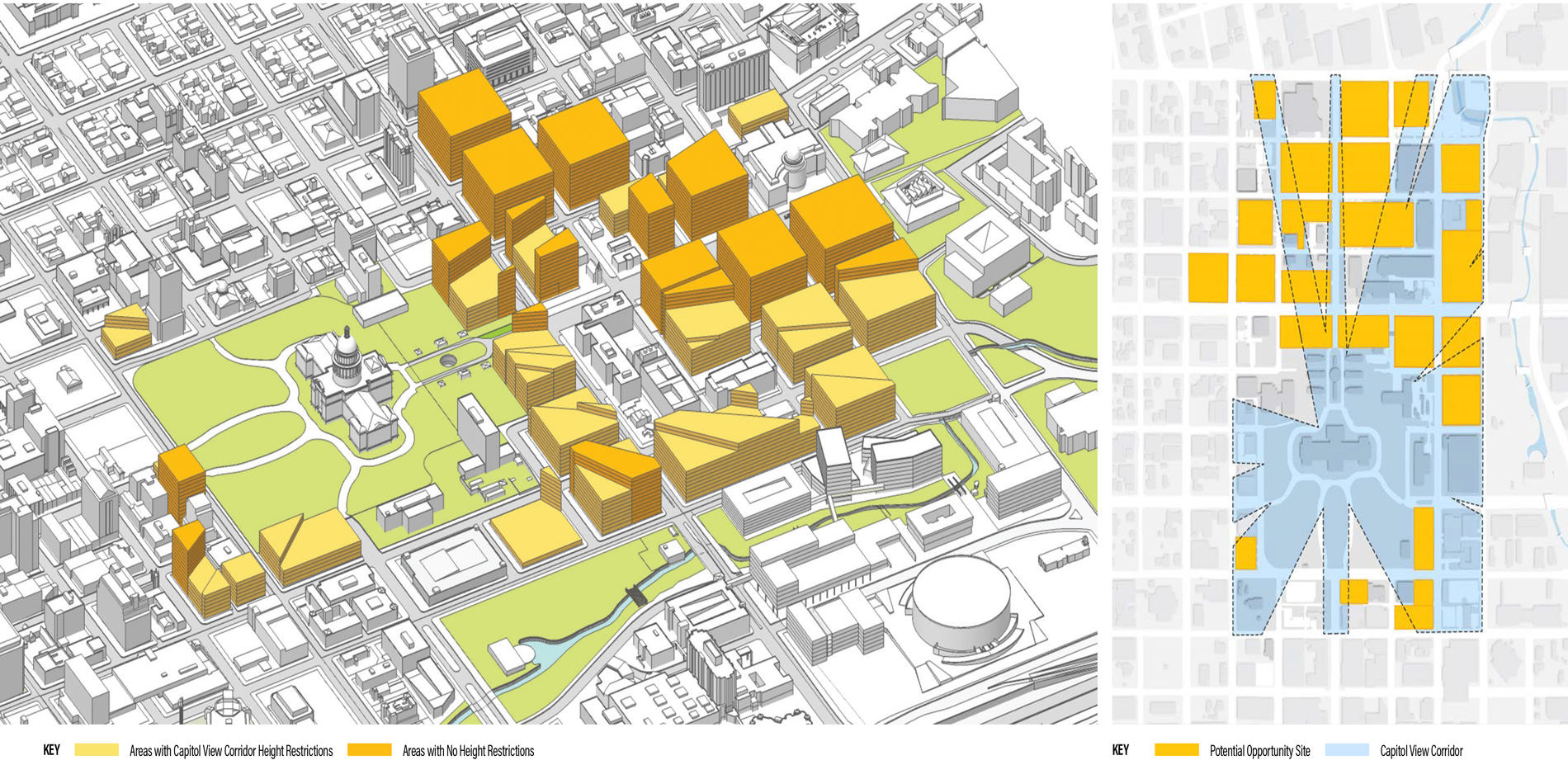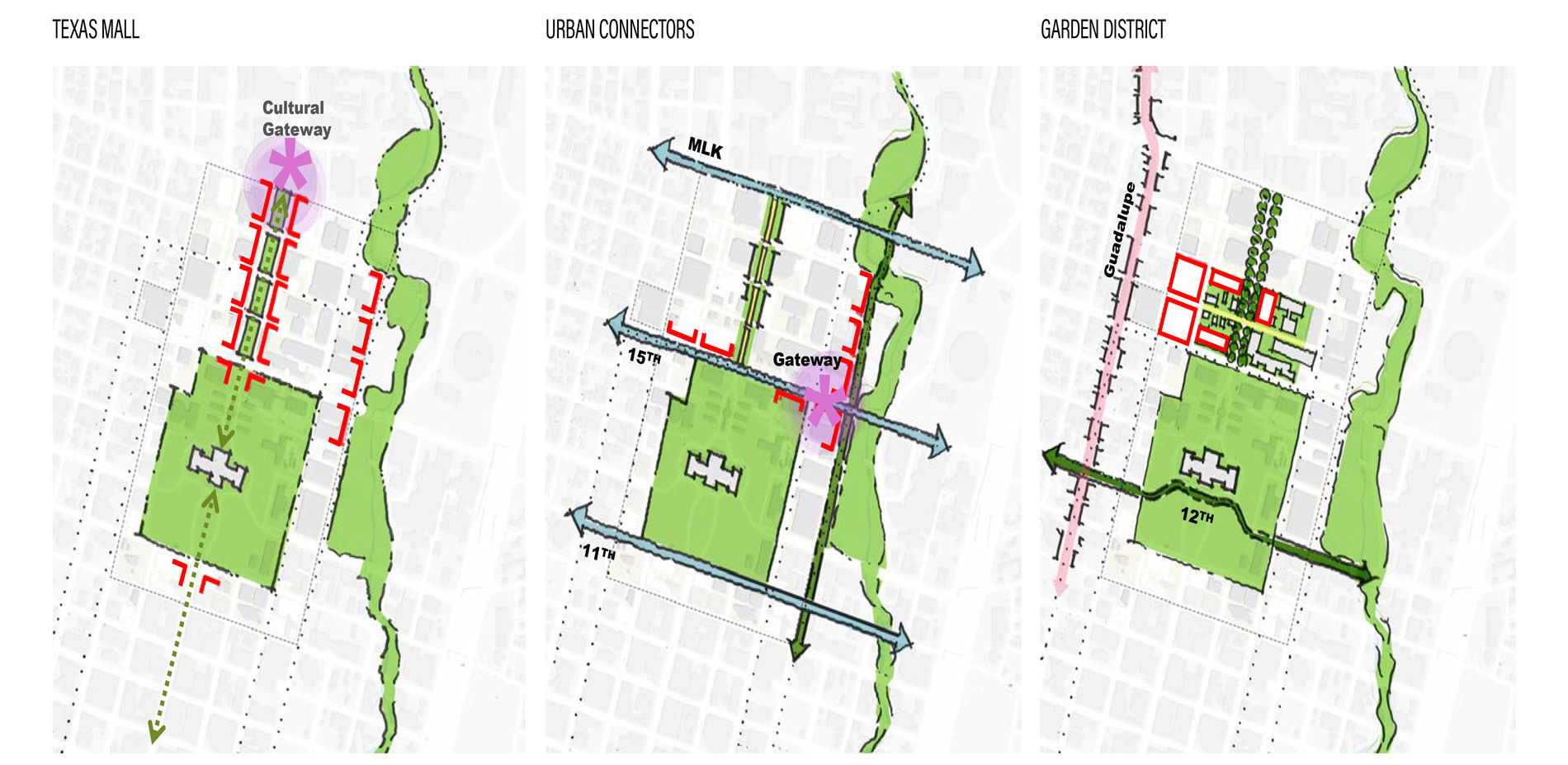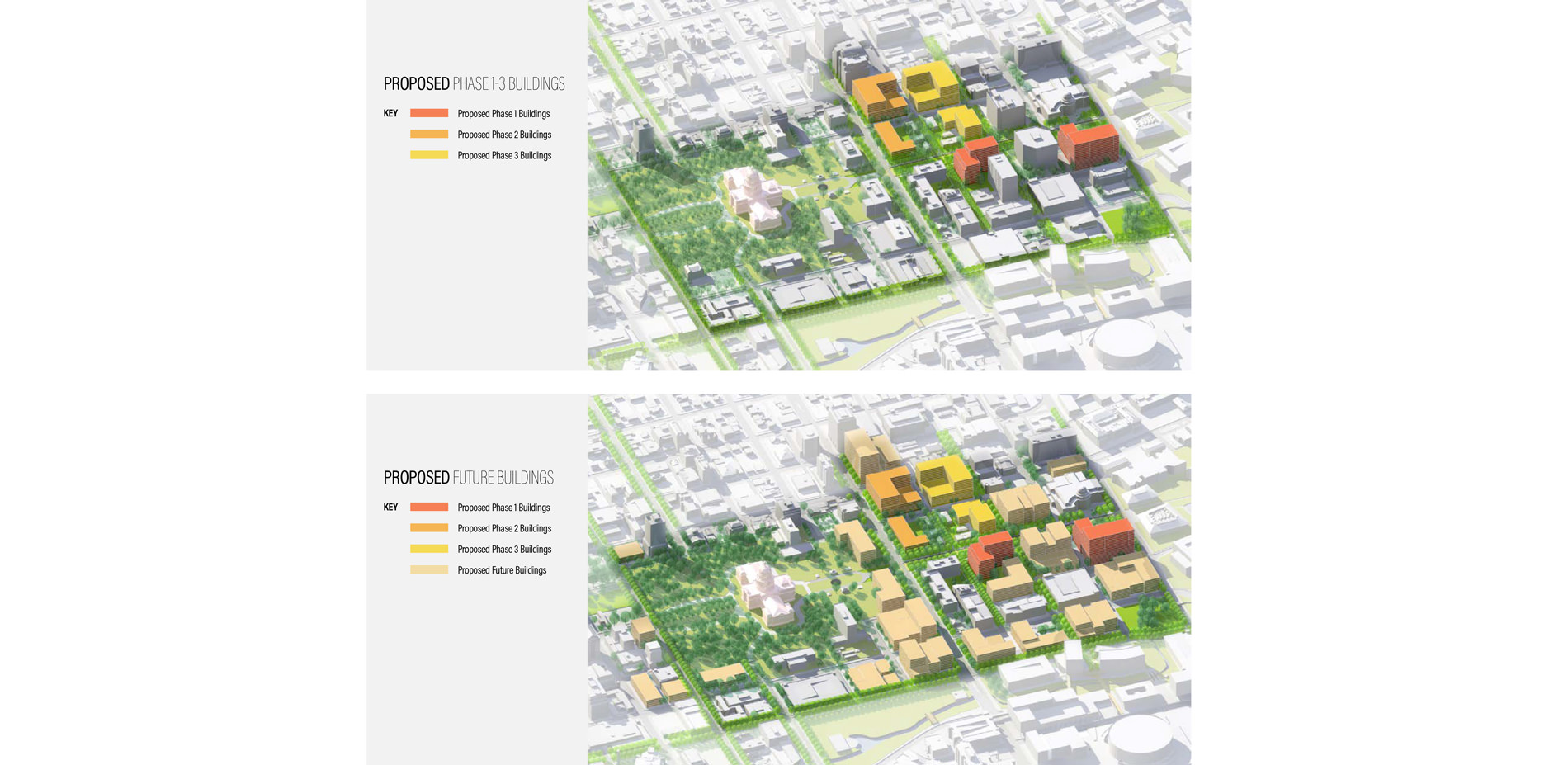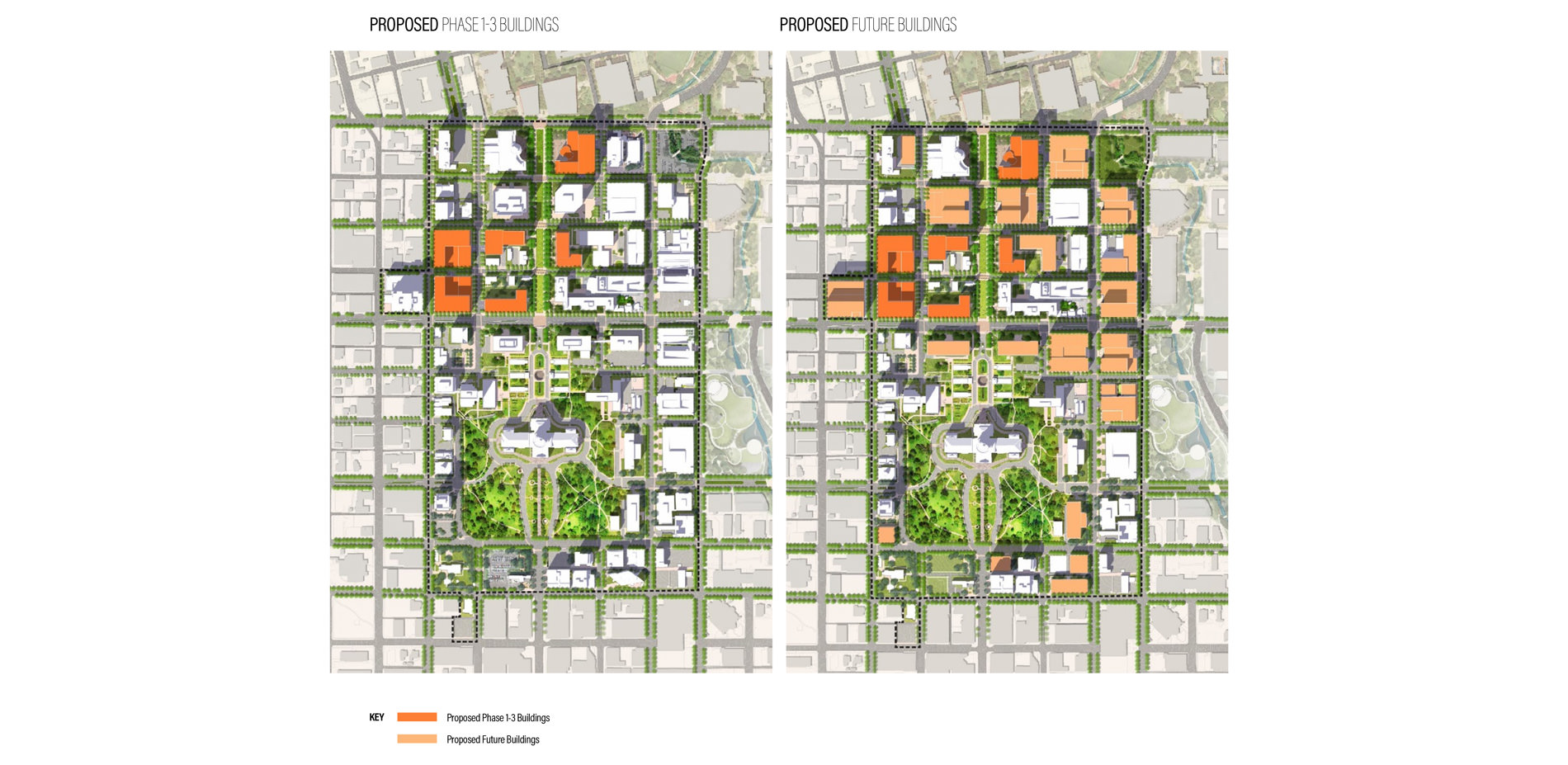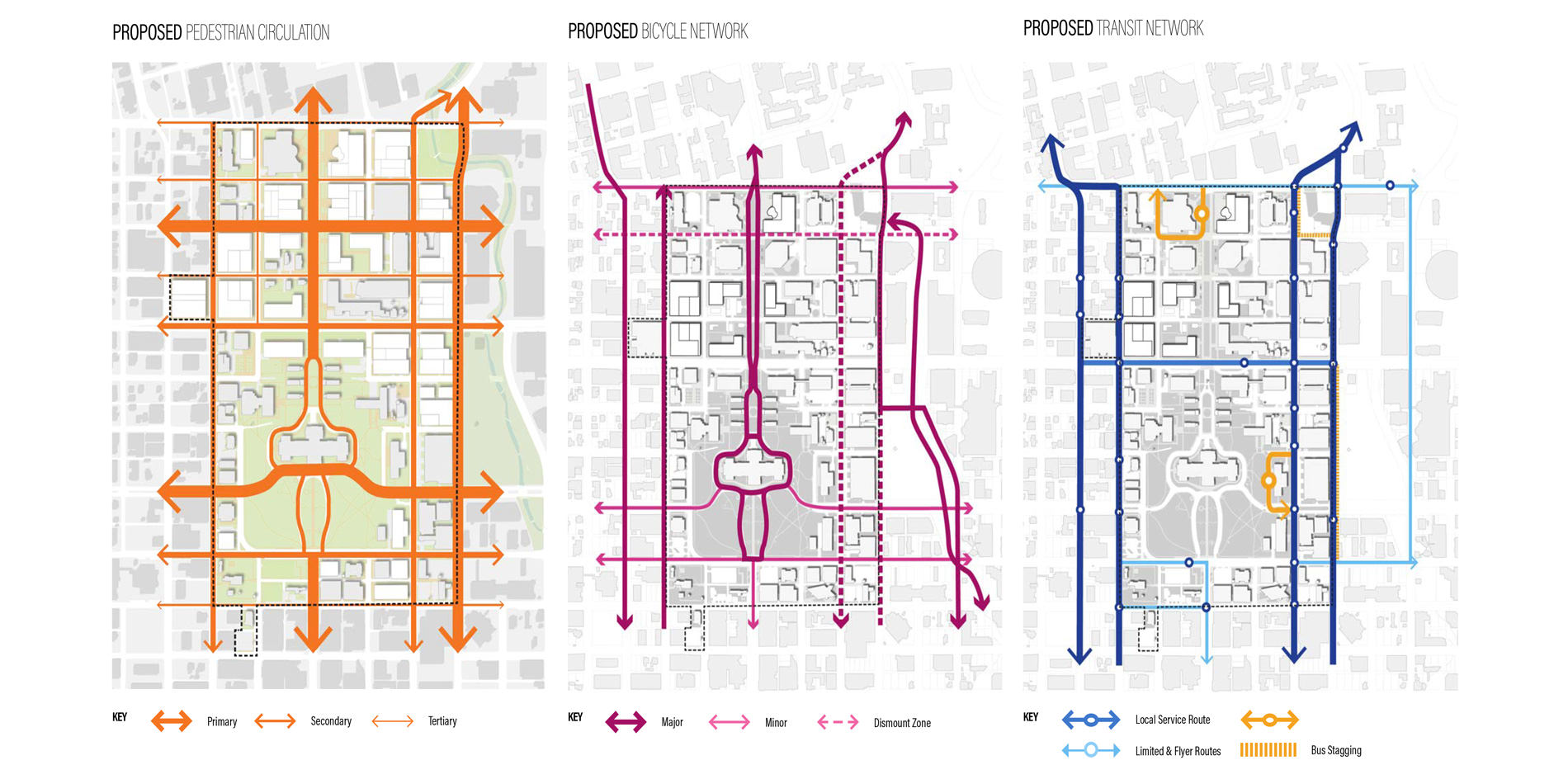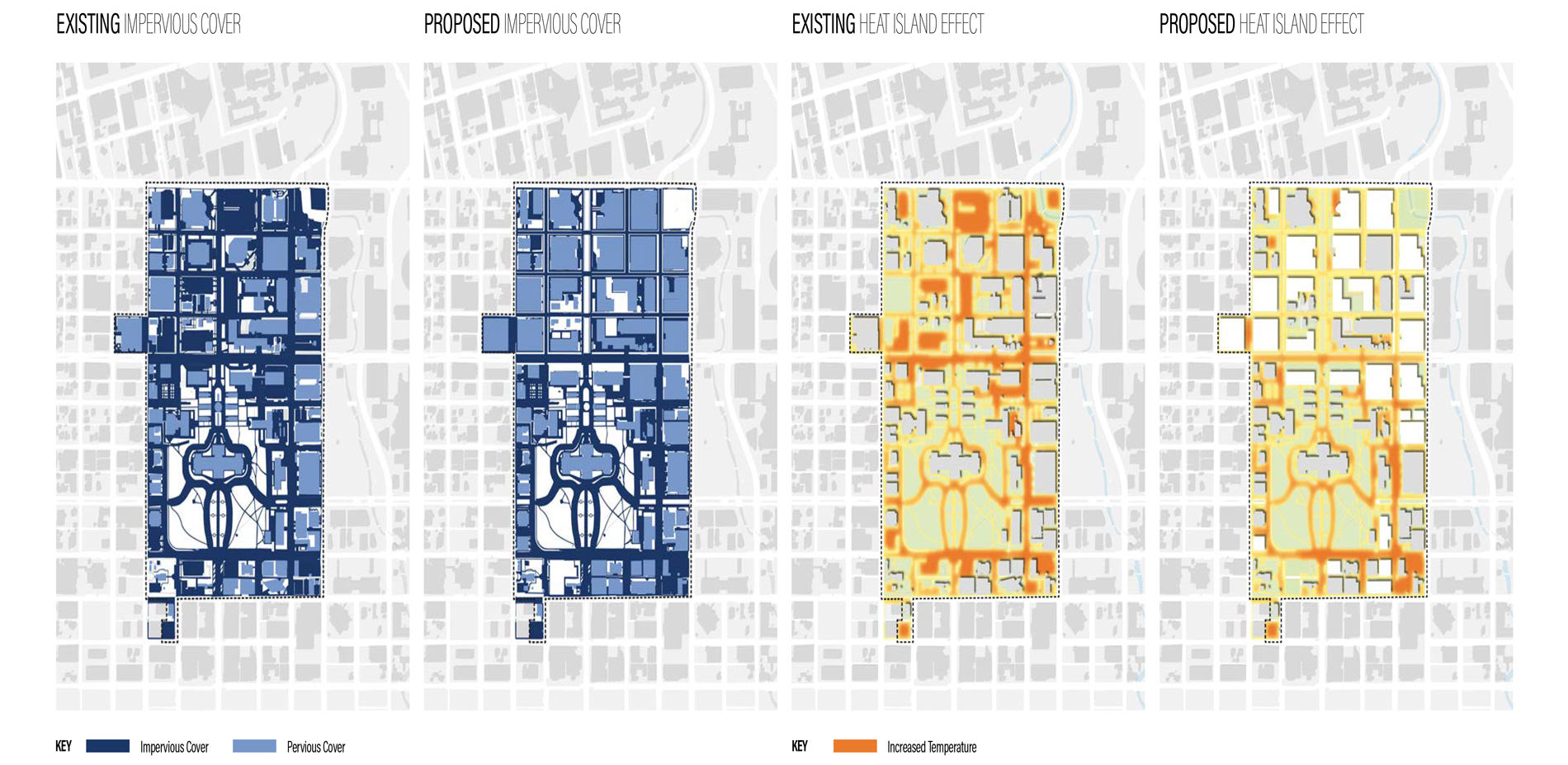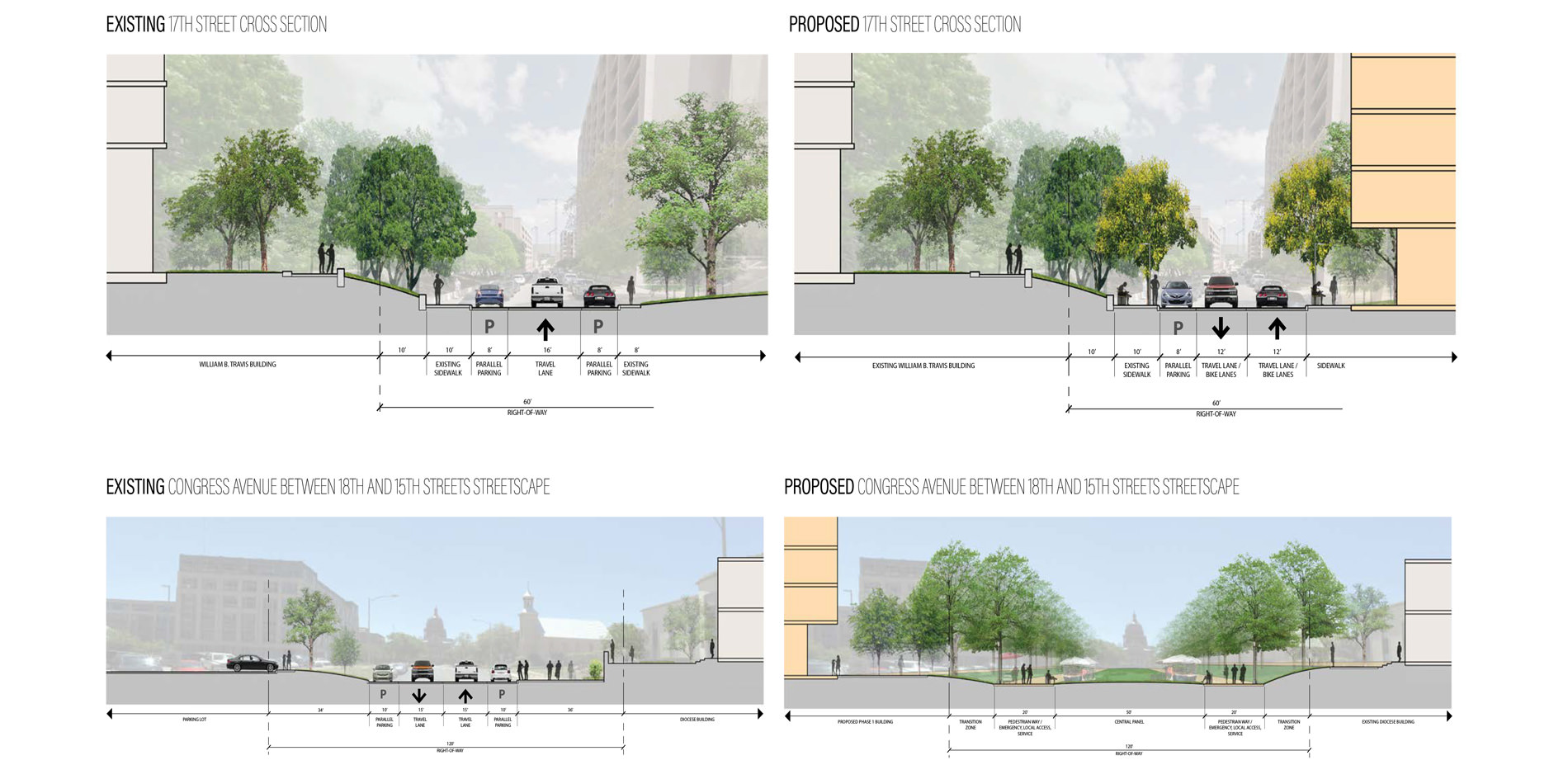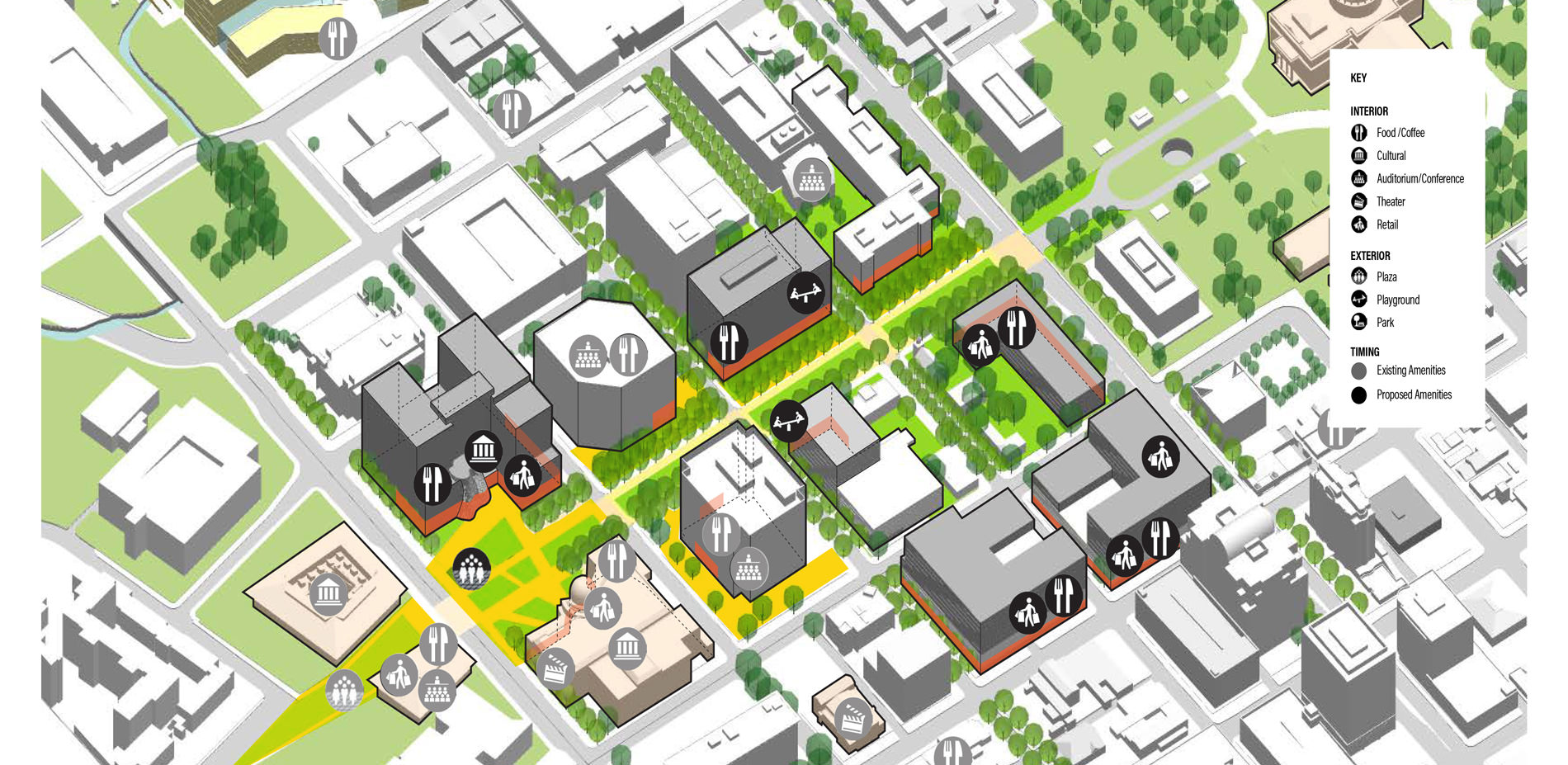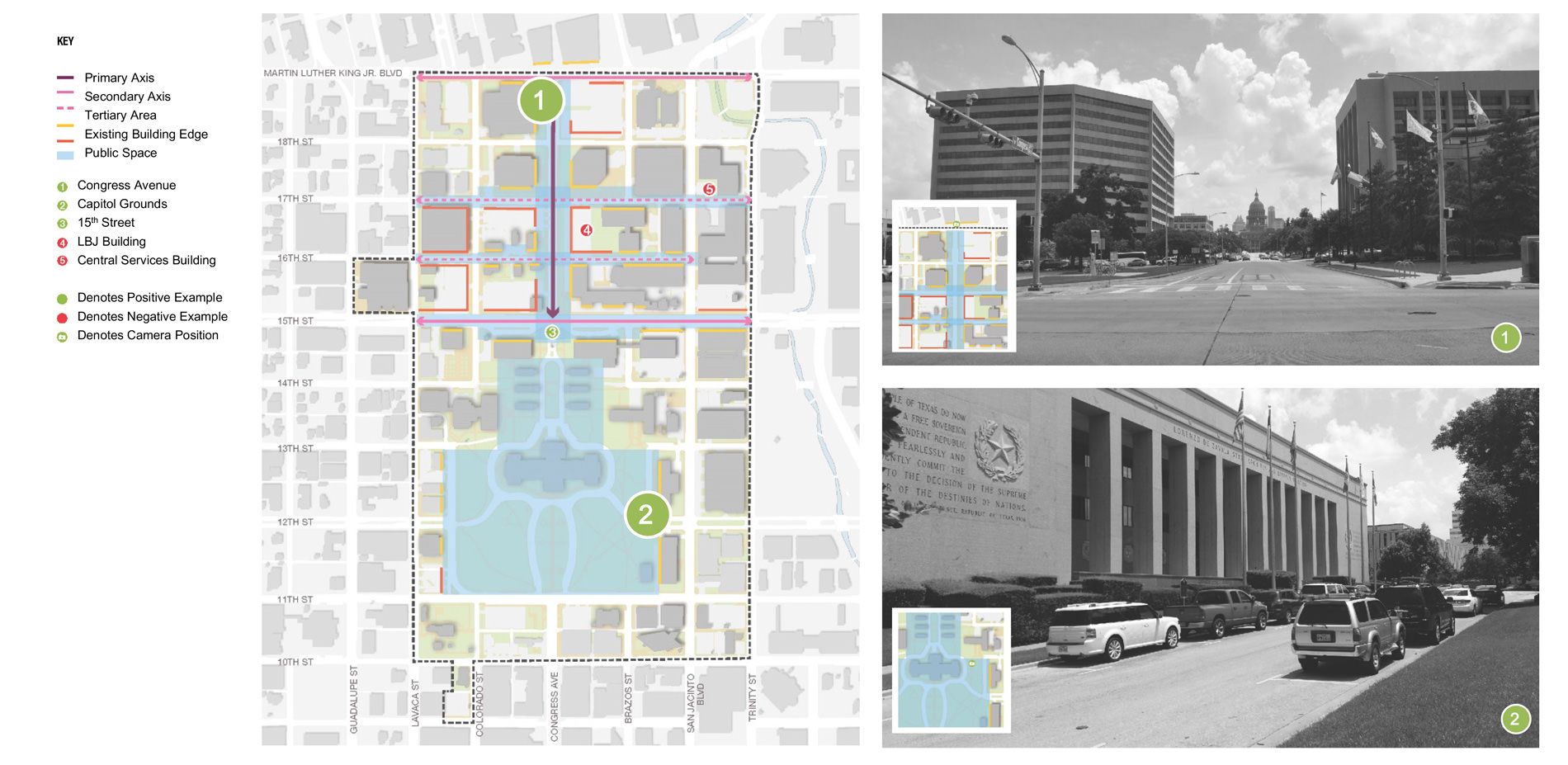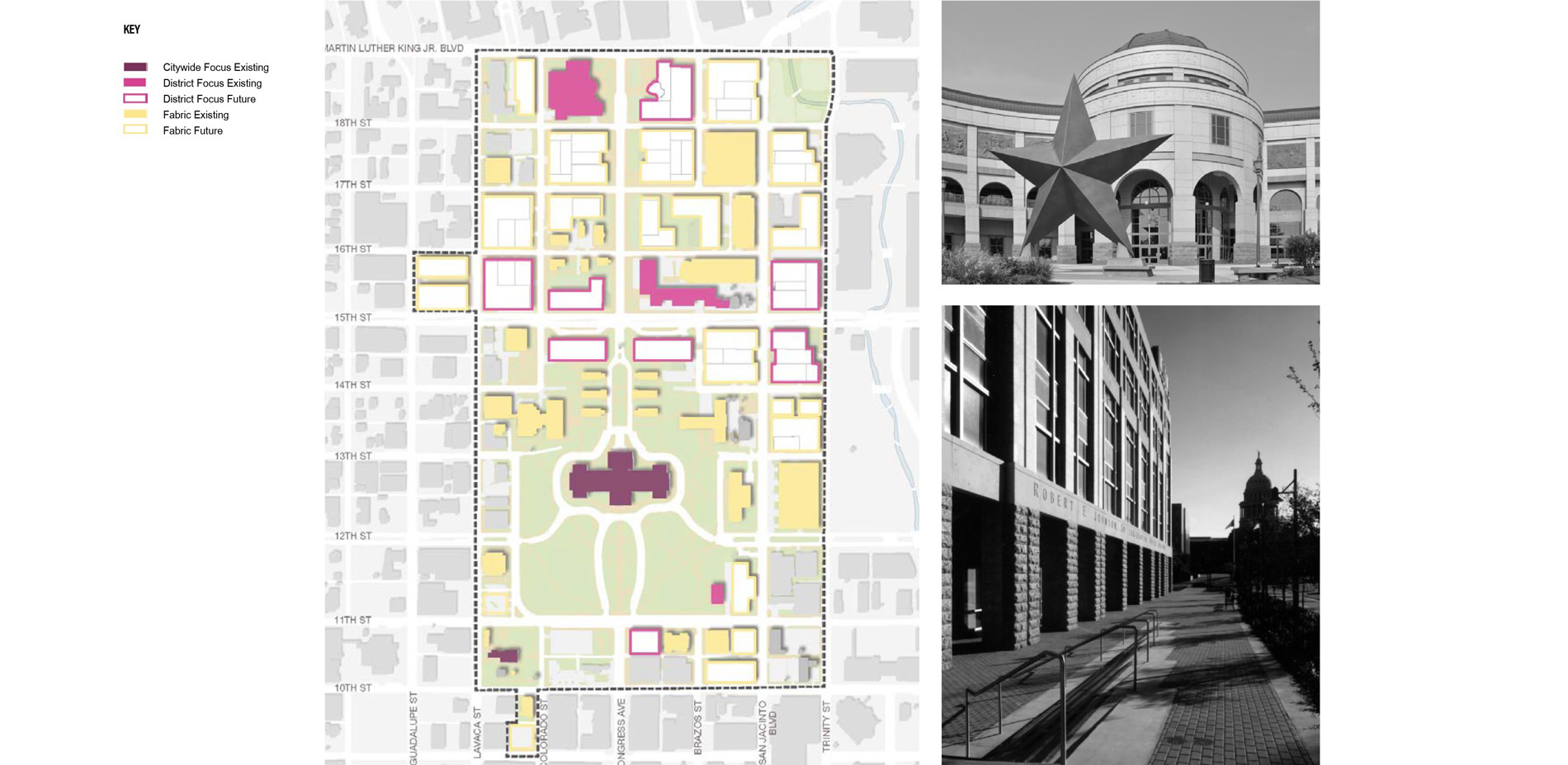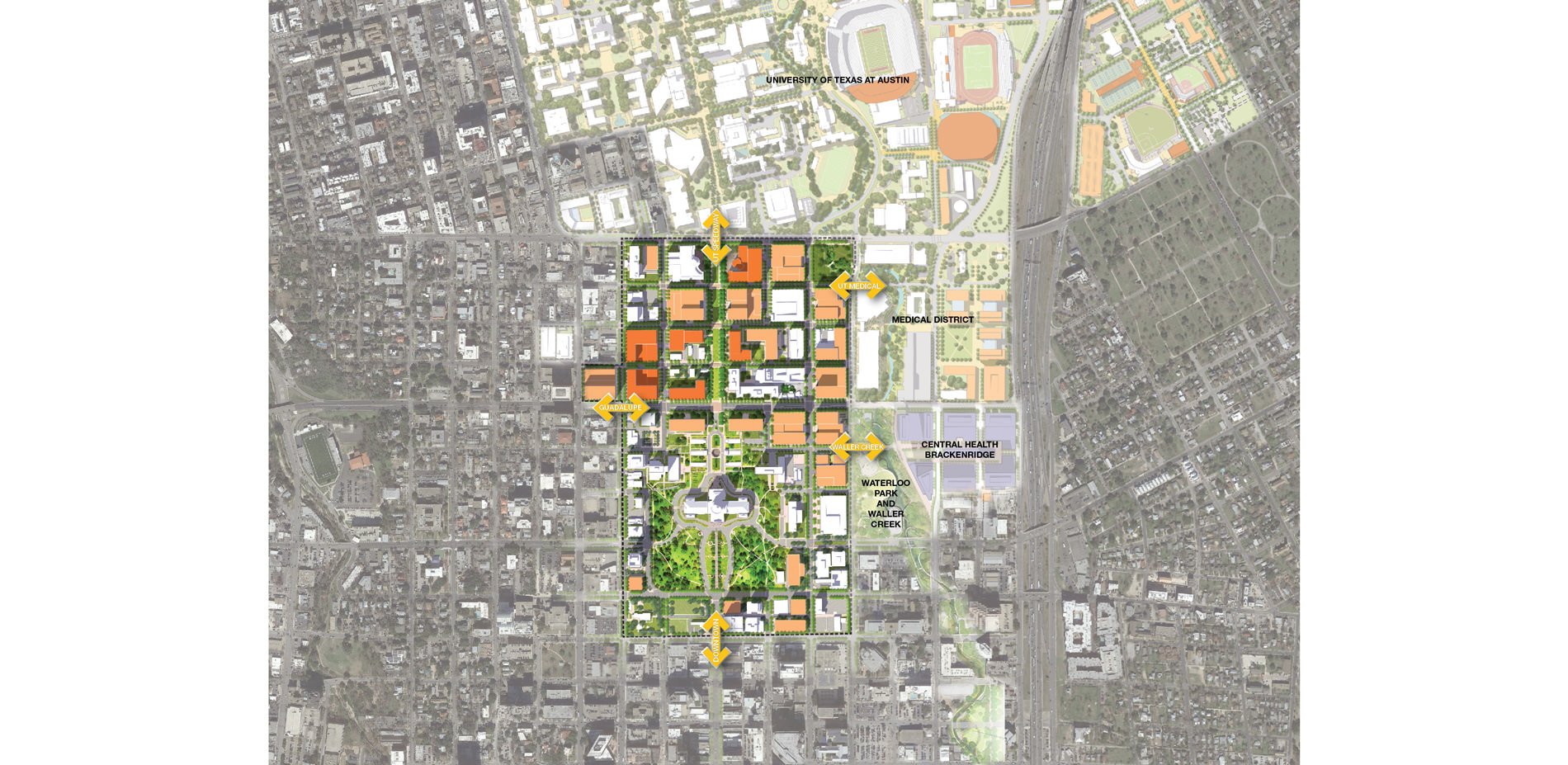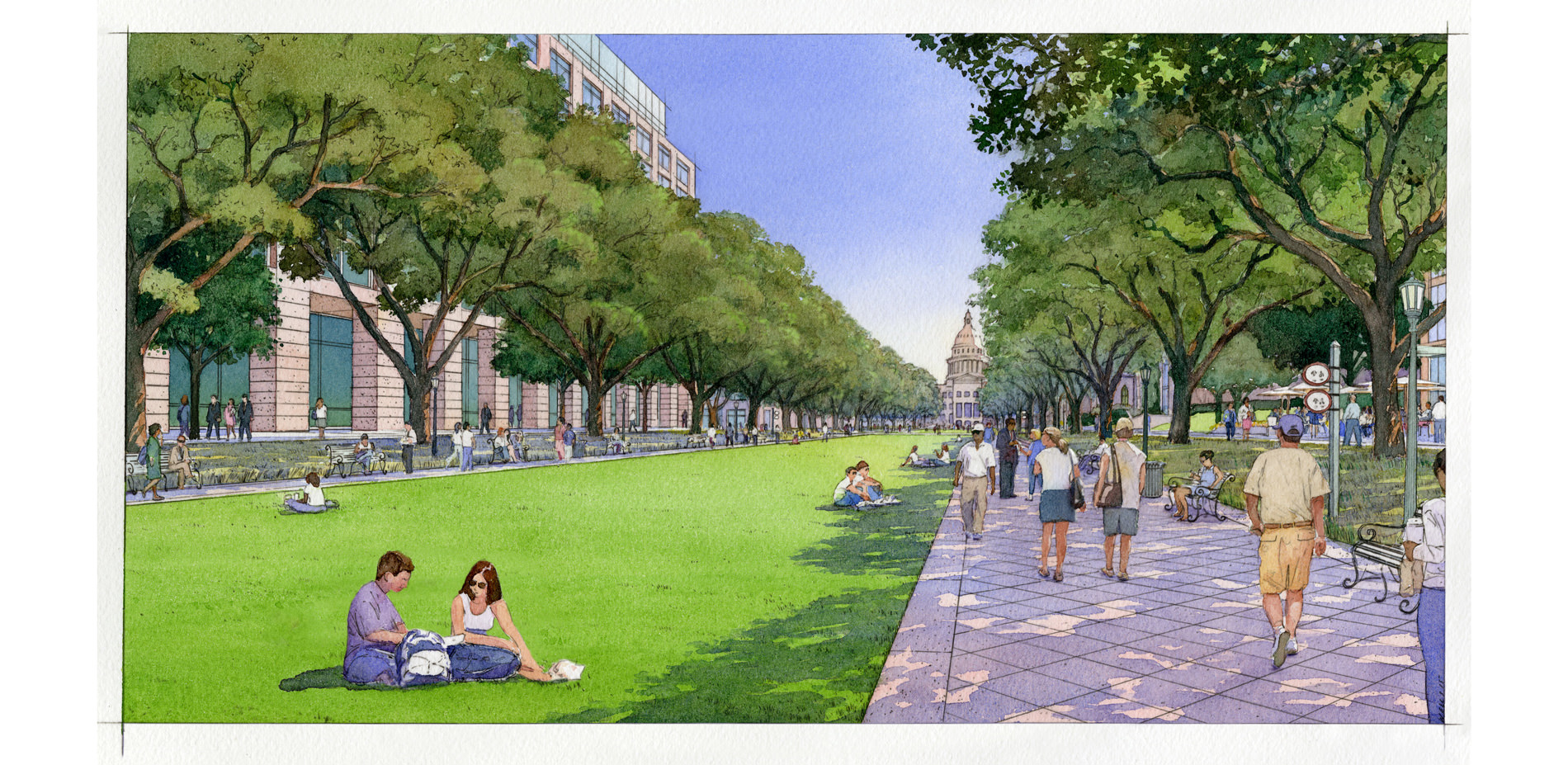Texas Capitol Complex Master Plan
Honor
Analysis and Planning
Austin, TX, USA | Page and Sasaki Associates | Client: Texas Facilities Commission
Good analysis and planning the way it integrates into Austin’s downtownand creates great design guidelines.
- 2017 Awards Jury
PROJECT CREDITS
Lead Designer
- Katharyn Hurd, Associate ASLA, Page
Landscape Architect of Record
- Sasaki Associates
Additional Project Credits
- Economic Analysis: HR&A Advisors, Inc.
- Cost Estimating: Sunland Group
- Structures and Parking: HWA Parking
- Programming: Facilities Resources, Inc.
- Transportation: Deshazo Group
- Engineering: Jose I. Guerra, Inc.
PROJECT STATEMENT
The Texas Capitol Complex Master Plan creates a comprehensive vision for the forty-block area surrounding the State Capitol in downtown Austin, providing a strategic framework for the development and transformation of the most prominent site in the State’s real estate portfolio. Future buildings are organized around and help define the pedestrian realm and civic spaces. The most noteworthy such space is the Texas Mall, a four-block tree-lined open space, created by the vacation of a portion of Congress Avenue, that will mark the northern axis to the State Capitol and provide recreational and event space for employees and visitors alike. Open space, pedestrian, and bicycle connections are extended to the adjacent districts including Congress Avenue Historic District, The University of Texas Speedway Mall, Dell Medical School, and Waterloo Park.
The powerful vision for the Capitol Complex resulted in legislative support for implementation of the first phase, which includes construction of three blocks of the Texas Mall with attendant parking, landscape and street improvements, and over one million square feet of new office space.
PROJECT NARRATIVE
The Texas Capitol Complex is a forty-block district in downtown Austin with primarily State-owned land and facilities. It is highlighted at the center by the historic State Capitol and rich landscape of the Capitol grounds. However, the remainder of the complex is marked by state office buildings often disconnected by numerous surface parking lots and standalone parking structures. The master plan began with a deep analysis of the site’s history as well as a thorough assessment of a range of factors including historic buildings, mobility systems, parking, infrastructure support, building conditions and lifespans, current landscape and public space conditions, and flood plain impacts. Constraints imposed by both municipal and state Capitol View Corridor legislation and the prior creation of a Capitol Dominance Zone presented challenges in defining the urban design framework as well as densification options for the district.
The complexity of the project necessitated a truly collaborative effort among landscape architects, planners, urban designers, architects, engineers, and transportation planners. The planning process achieved consensus among multiple stakeholders including the Texas Facilities Commission, General Land Office, Texas Historical Commission, Texas State Preservation Board, Legislators, Office of the Governor, and City of Austin. This engagement process revealed six primary objectives for the master plan to achieve: (1) maximize the potential for State office space to reduce the financial burden incurred by the State through lease holdings, (2) create a destination for employees and visitors to the State Capitol, (3) define civic spaces; (4) establish gateways to the Capitol Complex, (5) improve connections with surrounding areas; (6) create vibrant streets.
Three guiding design concepts emerged from the analysis and engagement processes: (1) a vision for the Texas Mall, a new civic open space framing the visual axis of the State Capitol from the north, (2) design of streets as well-defined urban connectors where the landscape provides a pedestrian-friendly environment, and (3) establishment of unique precincts, such as the Garden District and a new Cultural Gateway to function as an anchor at the north end of the mall.
The Texas Mall is a four-block civic space designed to accommodate special events like the popular Texas Book Festival, informal outdoor space for visitors, and several performance spaces. It will also provide a central gathering plaza adjacent to the Texas State History Museum, Blanton Museum of Art, and a planned future cultural destination. The Texas Mall will link a continuous open space corridor from The University of Texas Speedway Mall through the Capitol grounds and connecting to the Congress Avenue Historic District. When complete, this will mark the center of a 15-block pedestrian dominated environment through Austin’s urban core. East-west streetscape improvements will foster bicycle and pedestrian connectivity to surrounding districts. In addition, the establishment of a Garden District around a cluster of notable historical structures and significant landscape features will serve as a quiet and human-scaled area within an otherwise compact urban environment.
New buildings will help define the Texas Mall and create a strong urban character for Fifteenth Street and Martin Luther King Jr. Boulevard. To this end, each State-owned site in the Capitol Complex was assessed in terms of its development potential, with an emphasis on framing and activating the Texas Mall and the key east-west corridors. A strategy was outlined to relocate 1.2 million square feet of State offices from lease spaces dispersed throughout Austin to the Capitol Complex. Six new office structures are proposed for sites that are currently open parking lots or parking structures targeted for replacement. A new underground parking structure beneath the Texas Mall will provide parking for four of the six new buildings, enhancing the pedestrian experience by reducing inter-agency auto traffic on surface streets. The underground structure and will also help facilitate distribution of infrastructure services for the complex.
Funding for the first phase of implementation was granted by the Texas Legislature during the 84th Legislative Session in 2015. This phase includes the first two buildings, including over one million square feet for use by State agencies. The phase will also develop three of the four blocks of the Texas Mall along with primarily below-grade parking for both the mall and buildings.
Environmental Strategies: A significant reduction in impervious surfaces through removal of surface parking lots and road surface, combined with stormwater management best practices identified in the design guidelines, will improve water quality and minimize stormwater impacts. Enhanced transit, bicycle, and pedestrian accommodations and connections will reduce single-occupancy auto trips to and within the complex. The heat-island effect of paved areas will be reduced by the addition of significant new landscape and tree canopy in the district, which will also reduce energy demand in adjacent buildings. Lastly, strategies for water efficiency and native habitat are established as policies through the plan’s design guidelines.
Design Guidelines and Building Standards: The plan sets forth a series of design guidelines for all future projects within the complex. These guidelines are broken into three sets of principles in the areas of Urban Design, Architectural Design, and Open Space and Landscape. The Urban Design Guidelines outlines strategies for a range of issues including the activation of the civic realm, mobility, and sustainability, among others. Architectural principles focus on topics such as defining public spaces, natural light, and the climate responsiveness of buildings. Landscape and open space guidelines propose a set of aspirational principles including creating iconic and unique great places and coordination of the public environment. These are coupled with detailed provisions for various streetscapes and open spaces throughout the complex, with a framework for street furnishings, lighting strategies, tree species, and intersection design. A compliance method is written to ensure successful implementation of all three sets of guidelines through an appointed panel of industry experts.
In addition to the design guidelines, the master plan project developed a separate document that details specific building standards for future construction within the Capitol Complex. These standards outline criteria for each set of building systems, from the performance of the building envelope to the efficiency of mechanical systems. The standards also regulate certain sustainable measures, such as undergoing life cycle cost analyses during the design process, ensuring that all buildings are solar ready, and investigating the potential use of non-potable water supplies.
Long-term Value: The Capitol Complex provides office space for over ten thousand State employees. It contains a number of historic buildings and sites, and is visited by over a million people a year. The enhanced public realm of the Capitol Complex will provide lasting benefits to the community of Austin and the State of Texas by improving the wellbeing and productivity of State employees, enhancing the enjoyment by visitors, and adding to the quality of life of all Austin citizens.
